Cooler Master MasterWatt Maker 1200 MIJ PSU Review
Why you can trust Tom's Hardware
Transient Response Tests
Advanced Transient Response Tests
For details on our transient response testing, please click here.
Ιn these tests, we monitor the MasterWatt Maker 1200 MIJ's response in several scenarios. First, a transient load (10A at +12V, 5A at 5V, 5A at 3.3V, and 0.5A at 5VSB) is applied for 200ms as the PSU works at 20 percent load. In the second scenario, it's hit by the same transient load while operating at 50 percent load.
In the next sets of tests, we increase the transient load on the major rails with a new configuration: 15A at +12V, 6A at 5V, 6A at 3.3V, and 0.5A at 5VSB. We also increase the load-changing repetition rate from 5 Hz (200ms) to 50 Hz (20ms). Again, this runs with the PSU operating at 20 and 50 percent load.
The last tests are even tougher. Although we keep the same loads, the load-changing repetition rate rises to 1 kHz (1ms).
In all of the tests, we use an oscilloscope to measure the voltage drops caused by the transient load. The voltages should remain within the ATX specification's regulation limits.
These tests are crucial because they simulate the transient loads a PSU is likely to handle (such as booting a RAID array or an instant 100 percent load of CPU/GPUs). We call these "Advanced Transient Response Tests," and they are designed to be very tough to master, especially for a PSU with a capacity of less than 500W.
Advanced Transient Response at 20 Percent – 200ms
| Voltage | Before | After | Change | Pass/Fail |
|---|---|---|---|---|
| 12V | 12.012V | 11.938V | 0.62% | Pass |
| 5V | 5.104V | 4.974V | 2.55% | Pass |
| 3.3V | 3.336V | 3.126V | 6.29% | Fail |
| 5VSB | 5.077V | 5.034V | 0.85% | Pass |
Advanced Transient Response at 20 Percent – 20ms
| Voltage | Before | After | Change | Pass/Fail |
|---|---|---|---|---|
| 12V | 12.012V | 11.900V | 0.93% | Pass |
| 5V | 5.104V | 4.953V | 2.96% | Pass |
| 3.3V | 3.336V | 3.070V | 7.97% | Fail |
| 5VSB | 5.077V | 5.022V | 1.08% | Pass |
Advanced Transient Response at 20 Percent – 1ms
| Voltage | Before | After | Change | Pass/Fail |
|---|---|---|---|---|
| 12V | 12.012V | 11.913V | 0.82% | Pass |
| 5V | 5.104V | 4.958V | 2.86% | Pass |
| 3.3V | 3.336V | 3.068V | 8.03% | Fail |
| 5VSB | 5.077V | 5.016V | 1.20% | Pass |
Advanced Transient Response at 50 Percent – 200ms
| Voltage | Before | After | Change | Pass/Fail |
|---|---|---|---|---|
| 12V | 11.995V | 11.924V | 0.59% | Pass |
| 5V | 5.103V | 4.973V | 2.55% | Pass |
| 3.3V | 3.315V | 3.117V | 5.97% | Fail |
| 5VSB | 5.066V | 5.019V | 0.93% | Pass |
Advanced Transient Response at 50 Percent – 20ms
| Voltage | Before | After | Change | Pass/Fail |
|---|---|---|---|---|
| 12V | 11.996V | 11.896V | 0.83% | Pass |
| 5V | 5.103V | 4.968V | 2.65% | Pass |
| 3.3V | 3.315V | 3.054V | 7.87% | Fail |
| 5VSB | 5.066V | 5.002V | 1.26% | Pass |
Advanced Transient Response at 50 Percent – 1ms
| Voltage | Before | After | Change | Pass/Fail |
|---|---|---|---|---|
| 12V | 11.995V | 11.897V | 0.82% | Pass |
| 5V | 5.103V | 4.952V | 2.96% | Pass |
| 3.3V | 3.315V | 3.051V | 7.96% | Fail |
| 5VSB | 5.066V | 5.014V | 1.03% | Pass |
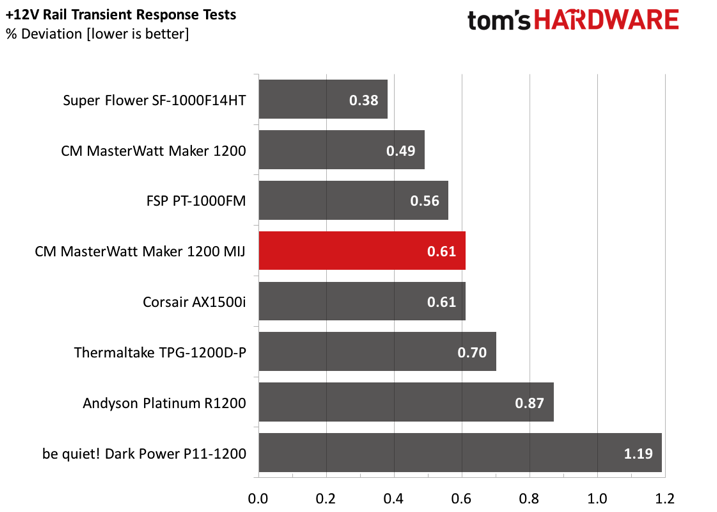
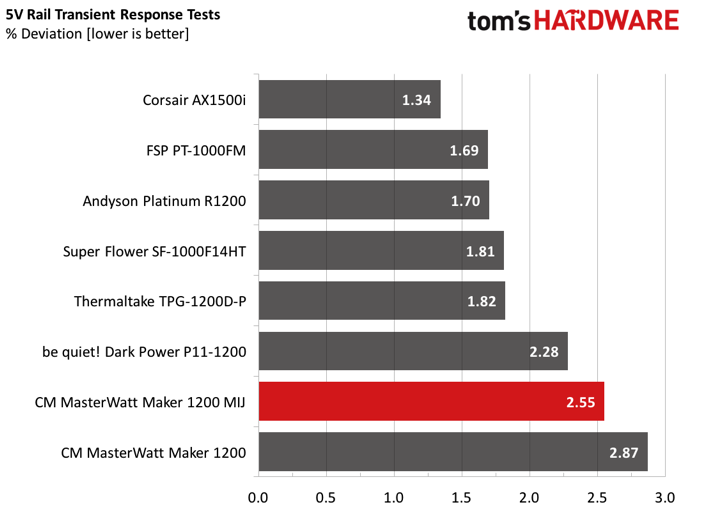
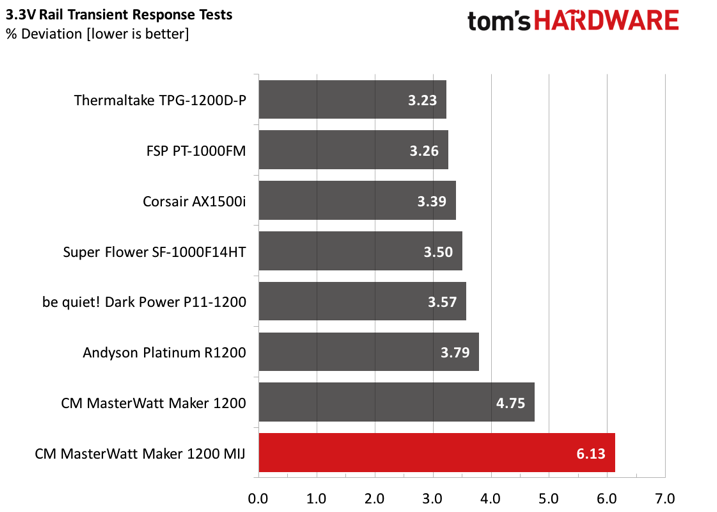
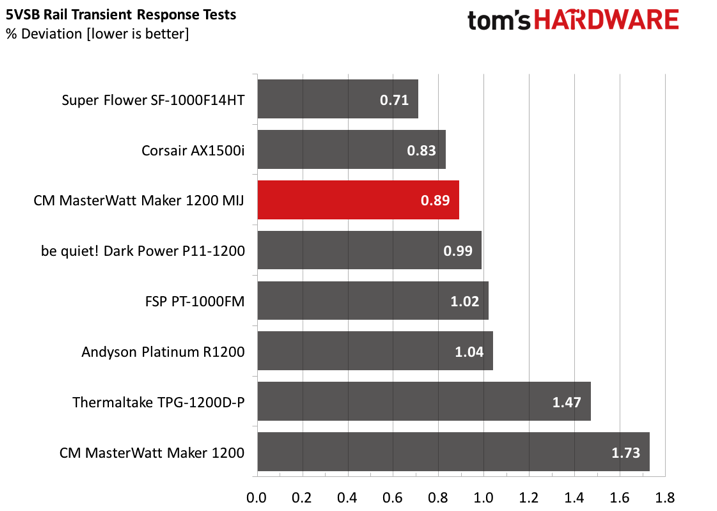

The +12V rail performs well enough, and the 5V and 5VSB rails are fare fairly. We're really disappointed in the 3.3V rail, though, which exhibits huge deviations that lead to failures in every test. It is sad to see poor performance at 3.3V from such an expensive PSU. Murata and Cooler Master needed to catch this before the MasterWatt Maker 1200 MIJ went into production.
Get Tom's Hardware's best news and in-depth reviews, straight to your inbox.
Here are the oscilloscope screenshots we took during Advanced Transient Response Testing:
Transient Response At 20 Percent Load – 200ms


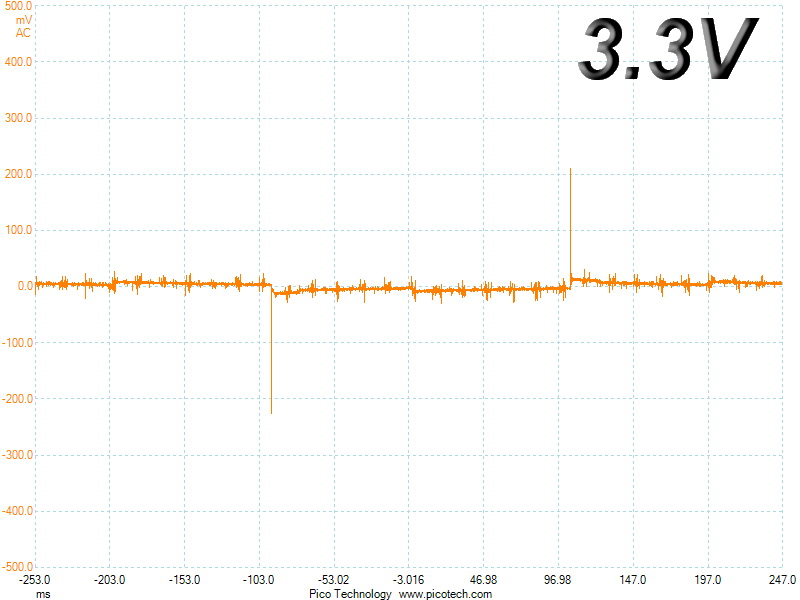
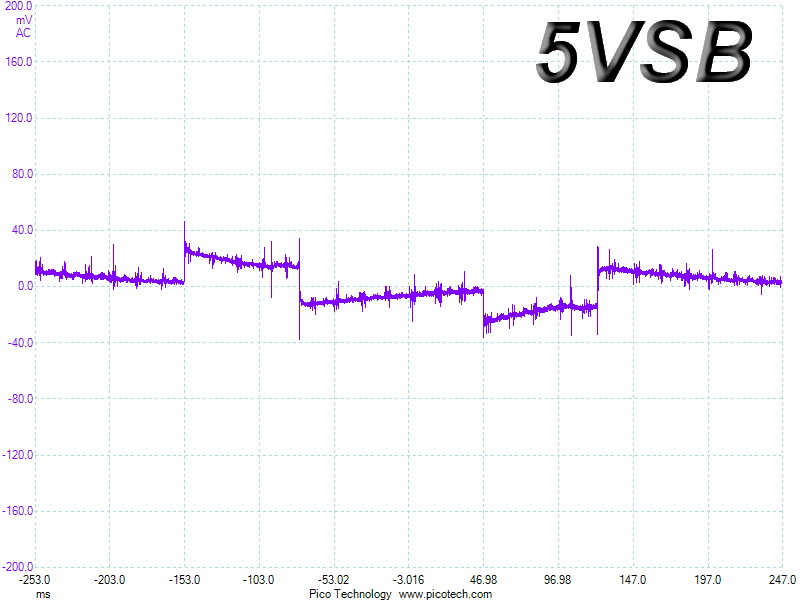
Transient Response At 20 Percent Load – 20ms
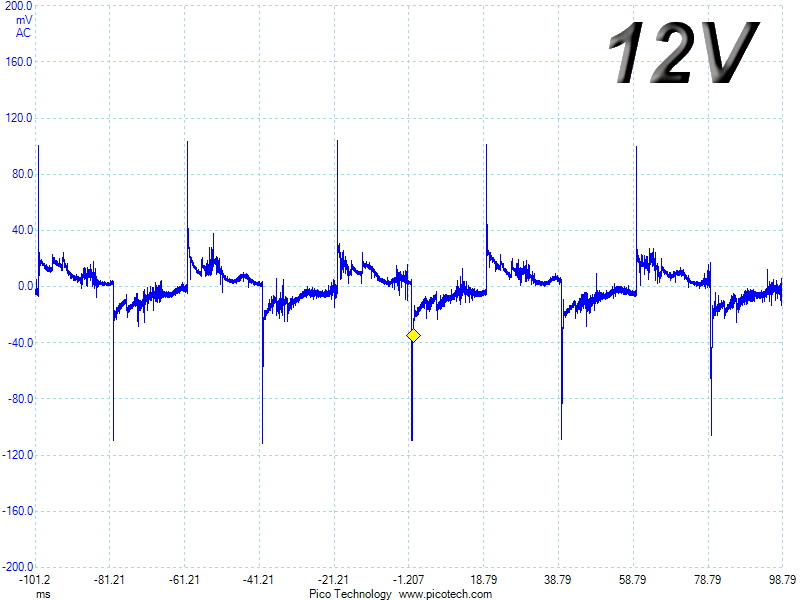

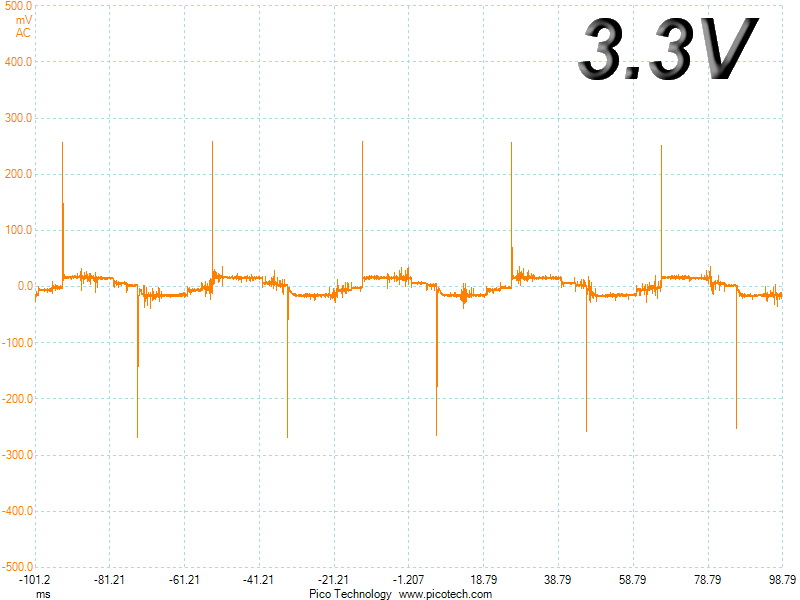
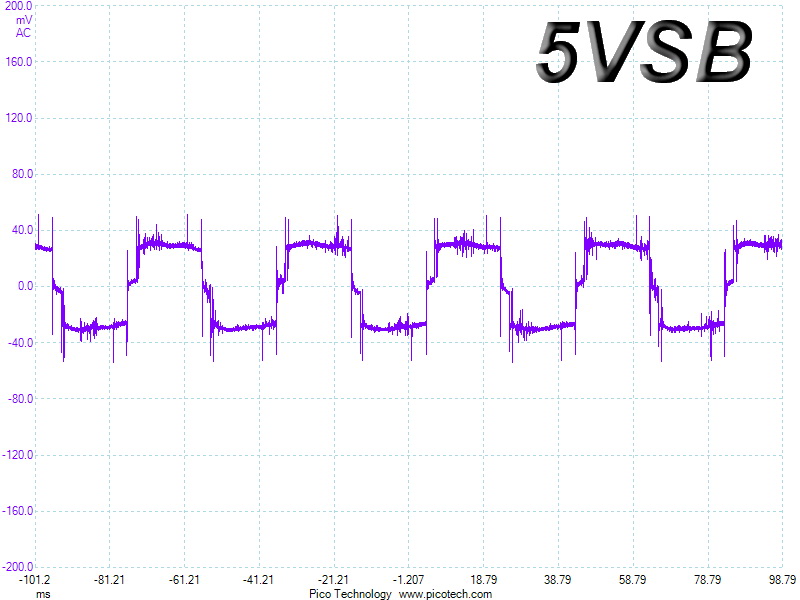
Transient Response At 20 Percent Load – 1ms
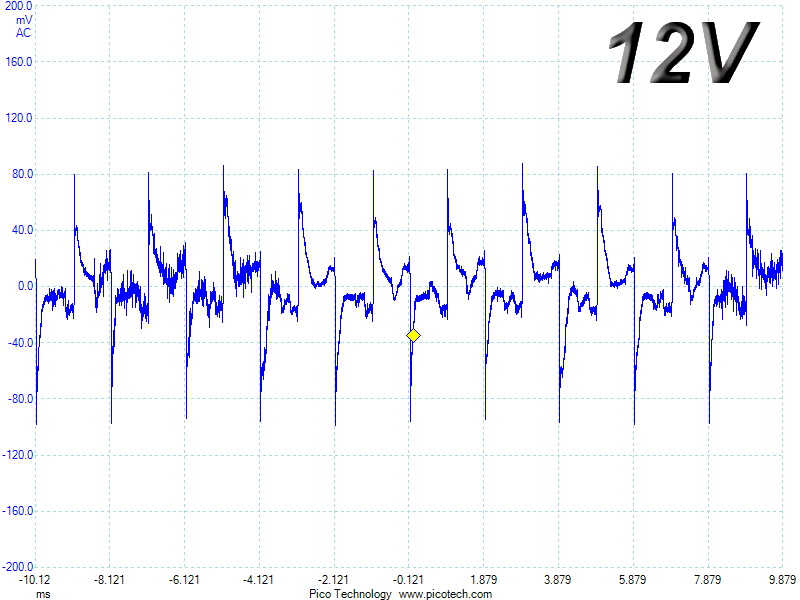
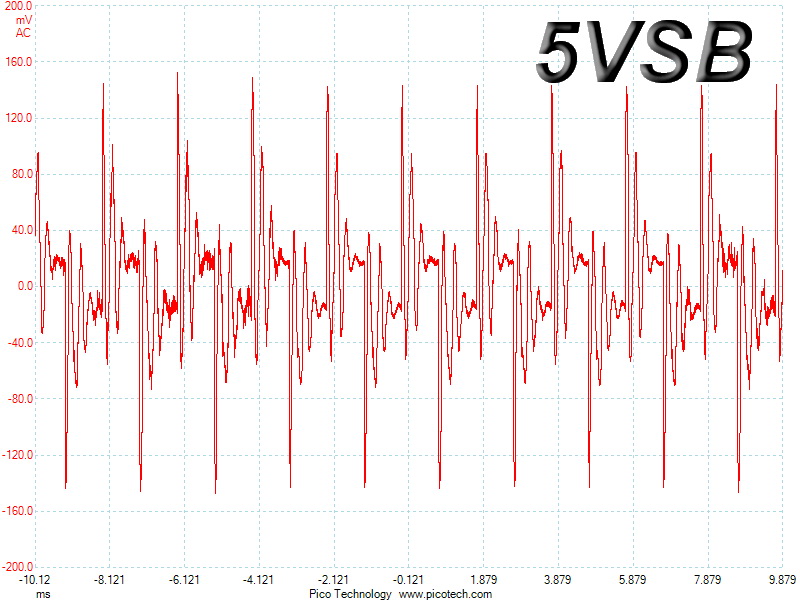

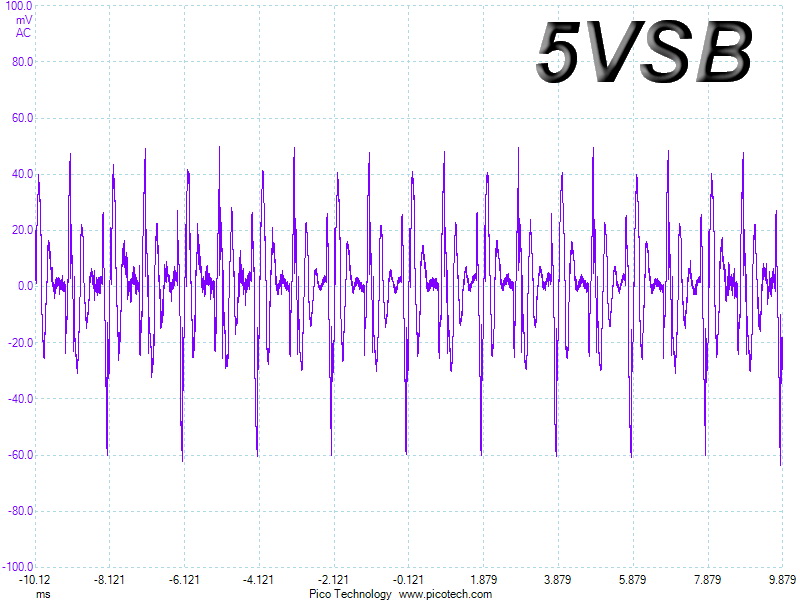
Transient Response At 50 Percent Load – 200ms
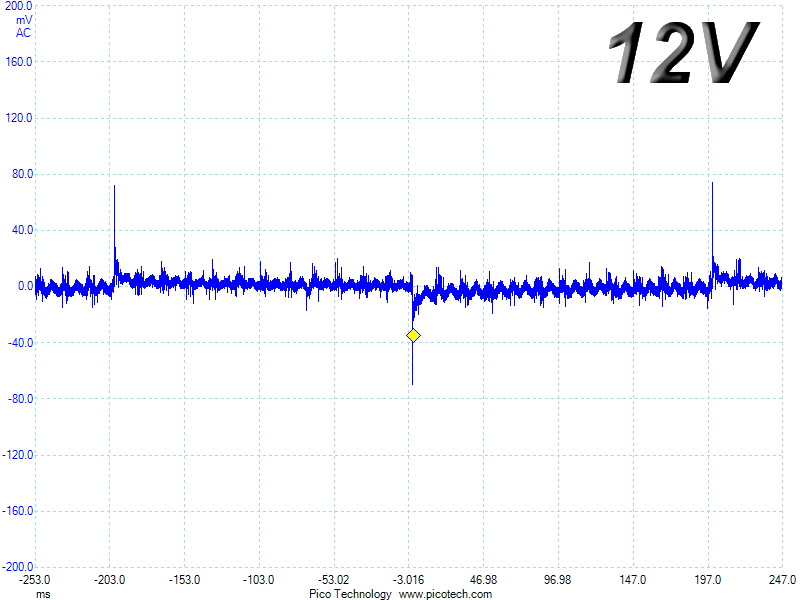

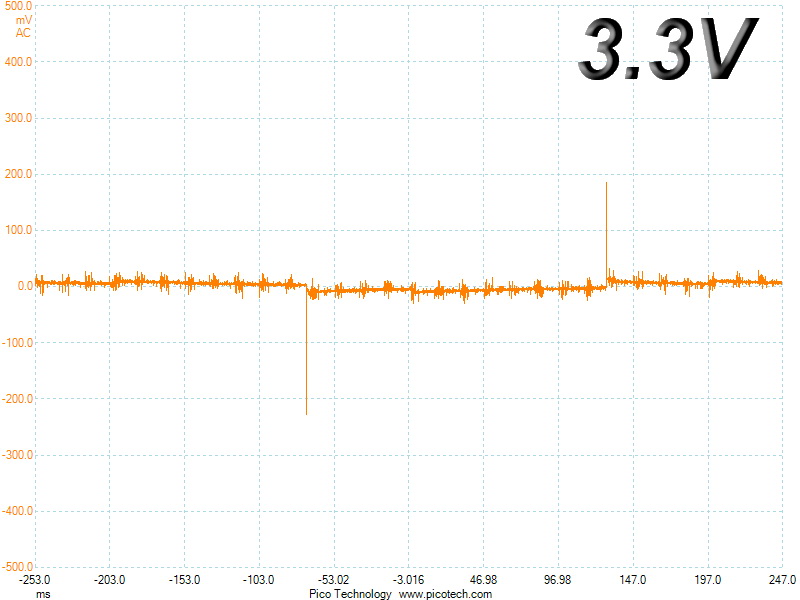

Transient Response At 50 Percent Load – 20ms



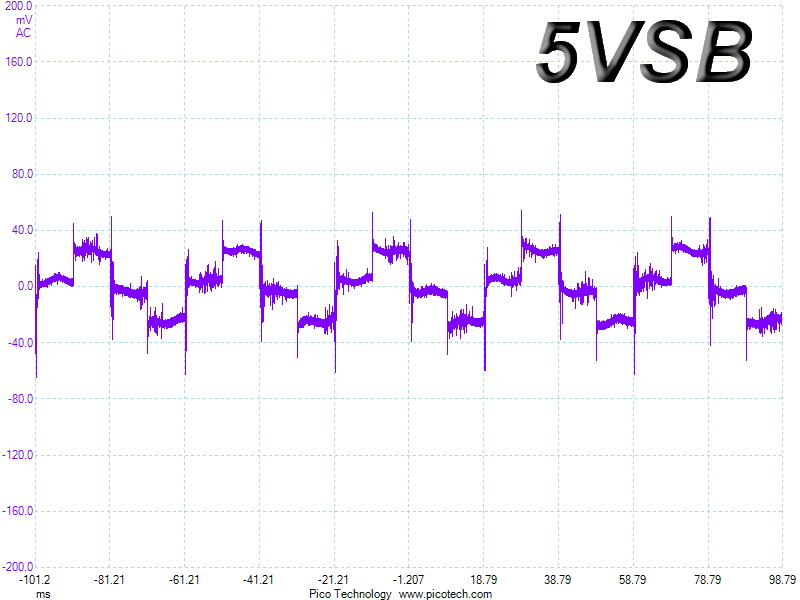
Transient Response At 50 Percent Load – 1ms
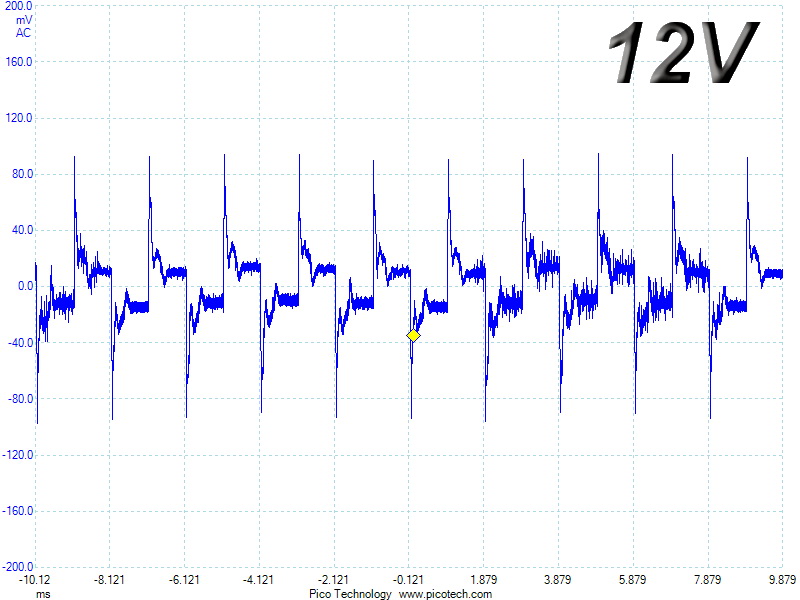

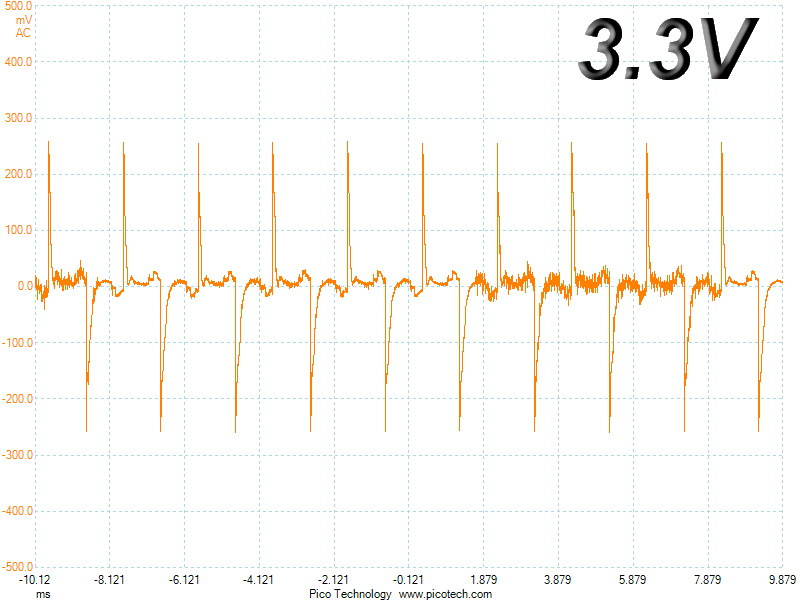

Turn-On Transient Tests
In the next set of tests, we measured the PSU's response in simpler transient load scenarios—during its power-on phase.
For the first measurement, we turned the MasterWatt Maker 1200 MIJ off, dialed in the maximum current the 5VSB could output and switched the PSU back on. In the second test, we dialed the maximum load the +12V could handle and started the 1.2kW supply while it was in standby mode. In the last test, while the PSU was completely switched off, we dialed the maximum load the +12V rail could handle before switching it back on from the loader and restoring the power. The ATX specification states that recorded spikes on all rails should not exceed 10 percent of their nominal values (+10 percent for 12V is 13.2V, and 5.5 V for 5V).
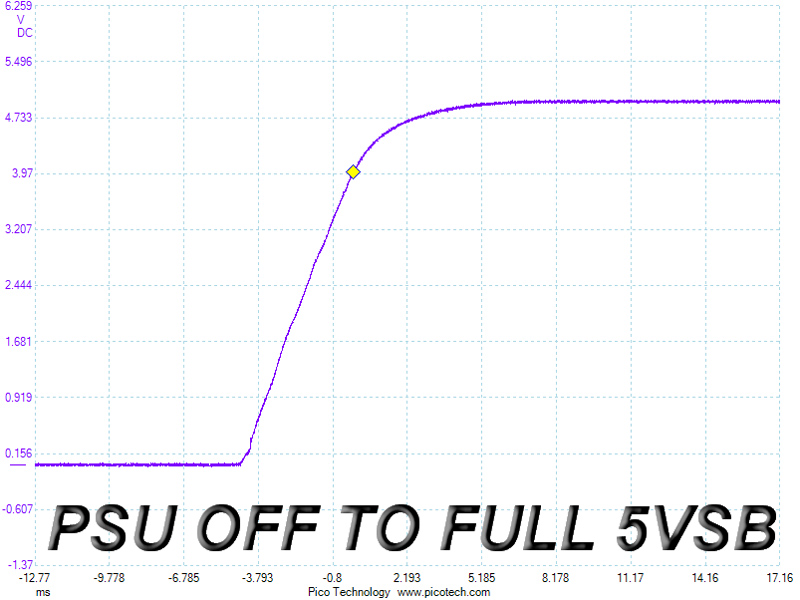
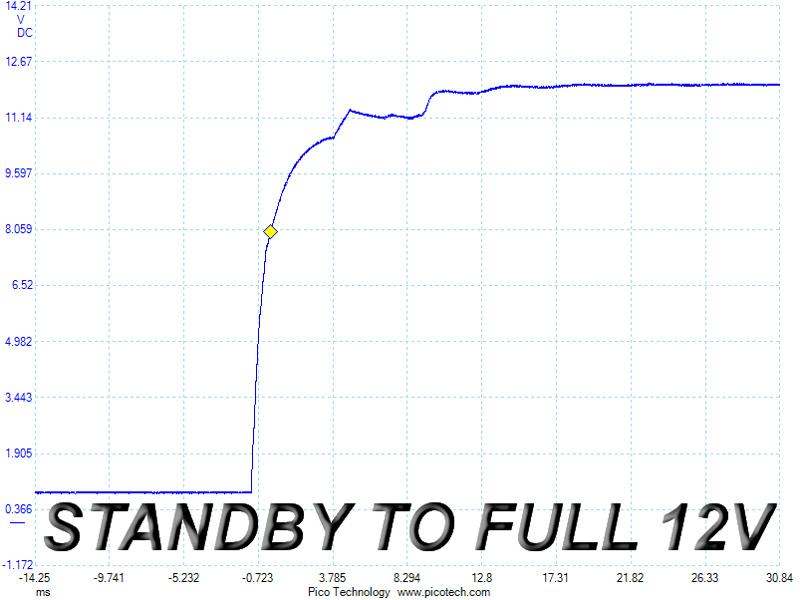
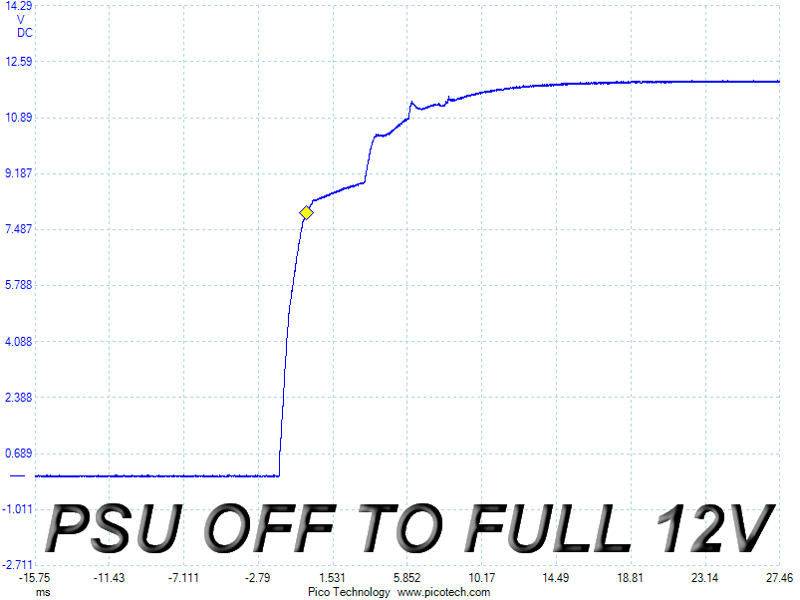
The 5VSB rail performs great in these tests. On the other hand, we'd like to see smoother slopes in the +12V tests.
MORE: Best Power Supplies
MORE: Power Supplies 101
MORE: How We Test Power Supplies
MORE: All Power Supply Content
Current page: Transient Response Tests
Prev Page Cross-Load Tests & Infrared Images Next Page Ripple Measurements
Aris Mpitziopoulos is a contributing editor at Tom's Hardware, covering PSUs.
-
dstarr3 A THOUSAND DOLLARS?! What on Earth would a desktop PSU have to do to be worth $1,000? Clearly nothing that this PSU in particular is doing.Reply -
dstarr3 Like, seriously, you could build an entire gaming PC with a different 10-year-warranty PSU for the cost of this one PSU. Simply MUST be targeting the more-money-than-sense crowd here.Reply -
jcwbnimble What was CM thinking with this product? Are there really people out there that would drop $1K on a power supply that was inferior to units that cost half as much? This sounds like a product that CM agreed to just to get Murata in bed with them for future projects.Reply
Murata to CM "Sure we'll start making products for you, just agree to buy our first effort regardless of price point, quality, and technological compromises".
I'm now waiting for the CM case made by Gucci that uses external laptop power supplies, has room for only one 7mm SSD, and can't even accommodate a 7" GPU. I'd pay $1k for it as long as everyone knows it's made by Gucci. -
jcwbnimble Oh, and I forgot to mention that it comes with ribbon cables. How did CM "spare no expense" when it includes basic black ribbon cables? Come on guys, you should have blasted this PSU the second you opened the box and saw ribbon cables on a $1000 power supply.Reply
AND this thing is huge. Seriously CM?!!! The PSU on my original IBM PC/AT wasn't this large, and that had capacitors the size of D batteries in it.
Total fail by Murata and even bigger fail by CM for putting their name on it. -
dstarr3 lol Someone in the comments is actually trying to defend this product with downvotes. I'm sorry, but at this pricepoint, this product is indefensible.Reply -
drwho1 Like everyone is saying, NO Thank You, anyone can build an entire system for $1000 or less WITH a powerful/trusted PSU included.Reply -
InvalidError Reply
What is the problem with "basic black ribbon cables"? Personally, those are my favorite. I much prefer that over individual loose wires and braiding that snags on every somewhat sharp corner, screw and anything else that might stick out a bit.19609320 said:Oh, and I forgot to mention that it comes with ribbon cables. How did CM "spare no expense" when it includes basic black ribbon cables?
@Arris: the "some other way" to rectify AC without a bridge is bridge-less APFC where the boost diodes and the APFC FETs effectively replace the input bridge.